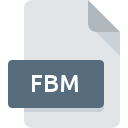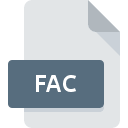.C4 File Extension

JEDMICS Image File
| Developer | JEDMICS |
| Popularity | |
| Category | Raster Image Files |
| Format | .C4 |
| Cross Platform | Update Soon |
What is an C4 file?
The ‘.C4 file extension’ is associated with JEDMICS, an acronym for Joint Engineering Data Management Information and Control System.
This file format primarily serves as an image file used within the defense and engineering sectors. JEDMICS facilitates the storage and retrieval of technical documents and images critical to engineering and military operations.
The ‘.C4 file’ specifically contains images that are vital for documentation and reference purposes in these fields.
More Information.
The history of JEDMICS dates back to the late 1980s when the U.S. military recognized the inefficiencies in handling large volumes of engineering documents.
The system was designed to replace manual methods of document management with a more automated and structured approach.
Initially, JEDMICS focused on managing documents in raster formats, including images stored in the ‘.C4 file extension’, which became a crucial component in digitizing and archiving technical data across defense and engineering sectors.
Origin Of This File.
JEDMICS was developed by the U.S. Department of Defense (DoD) to manage and distribute engineering data efficiently.
It emerged from the need to streamline the handling of technical documents, especially in environments where accuracy and security are paramount.
The ‘.C4 file extension’ specifically came into existence as a standardized format to store images associated with engineering drawings, maps, diagrams, and other technical visual data.
File Structure Technical Specification.
The ‘.C4 file’ is structured to store raster graphics, typically in black and white (bitmap) format, optimized for clarity and detail. The technical specifications include:
- Image Format: Bitmap (black and white).
- Compression: Lossless compression to minimize file size without compromising image quality.
- Resolution: Variable, depending on the scanning or digitization process, often optimized for high-definition output.
- Metadata: Embedded metadata such as date of creation, author information, and sometimes geospatial coordinates for spatial context.
The files are designed to be interoperable across various systems within the defense sector, ensuring compatibility and accessibility across different platforms used for document management and engineering workflows.
How to Convert the File?
Converting ‘.C4 files’ may be necessary to integrate them into broader document management systems or for viewing purposes outside specialized software. Conversion typically involves:
- Conversion Software: Use specialized conversion software designed for handling JEDMICS formats.
- Export Options: Some document management systems may provide export options to convert ‘.C4 files’ to more common image formats like TIFF or JPEG.
- Manual Conversion: In some cases, conversion may involve printing and rescanning documents into a more universally compatible format.
Advantages And Disadvantages.
Advantages:
- Security: Designed with security protocols to protect sensitive engineering data.
- Compression: Efficient compression techniques maintain image quality while reducing storage requirements.
- Accuracy: High-resolution images ensure precise representation of engineering diagrams and drawings.
Disadvantages:
- Compatibility: Limited compatibility outside specialized defense and engineering software.
- Complexity: Requires specific software for creation, editing, and viewing, which may not be readily available.
- File Size: Images can be large due to high-resolution requirements, impacting storage and transmission times.
How to Open C4?
Open In Windows
- Use JEDMICS-compliant software such as the official JEDMICS viewer or other compatible viewers available for Windows.
Open In Linux
- Explore compatibility options with open-source tools or consider running Windows-compatible viewers through compatibility layers like Wine.
Open In MAC
- While less common, some third-party viewers or conversion tools may support opening ‘.C4 files’ on MacOS.









